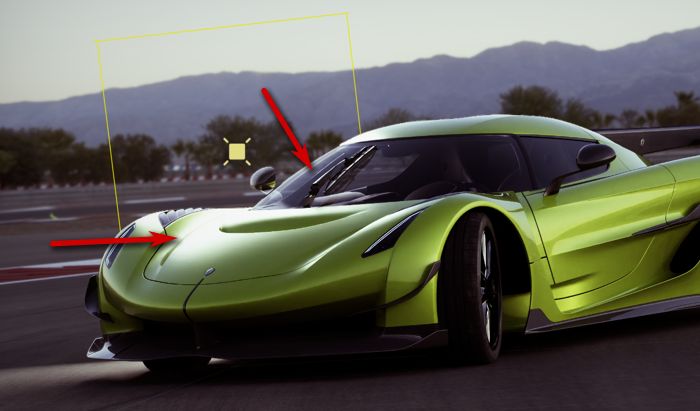108.1 Release Highlights#
A new method for controlling illumination from invisible lights has been introduced. Ghost Lights is more consistent than the previous method and provides a more plausible falloff for glossy materials. Scenes using the previous “Invisible Lights Roughness Threshold” attributes have their values converted to the new settings automatically.

Ghost lights being used to hide the specular reflection and transmission of a light source while retaining the glossy reflections in the car body#
Camera exposure can now be controlled per-camera, as opposed as a global setting for all cameras.
Fixed#
In some scenes, using the viewport Camera Light mode together with many-light sampling may cause artifacts. [
OMPE-57827]An occasional crash may occur when reloading the same stage multiple times. [
OMPE-62799]Could not get device current PCI-e link generation. [
OMPE-59197]Infinite bounds may hide meshes and stall the viewport in large scenes. [
OMPE-56685]Loading hsscclient in background threads may lead to instability. [
OMPE-54255]Excessive DLSS ghosting may occur when moving prims. [
OMPE-53847]Camera gizmos affect lighting. [
OMPE-52086]The changes made to the
omni:rtx:skipflag inomni:rtxare ignored by the renderer, causing issues with prim skipping. [OMPE-51251]Some mesh operations may create incorrect results leading to a crash. [
OMPE-51187]The first frame of a
DepthSensorAOV may fail to be produced when using RT with DLSS/DLAA. [OMPE-47370]Tiled .tiff or .tx files load improperly and show up as black. [
OMPE-44009]Memory leak when switching references. [
OMPE-40298]
Known Issues#
A crash on Windows 10 and 11 may occur when running on L40 GPUs with 580.x and 581.x drivers, while repeatedly loading and simulating certain Physx demo scenes. [
OMPE-64971]